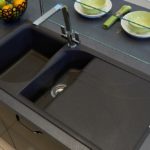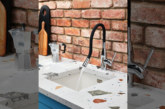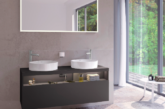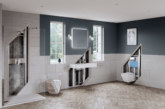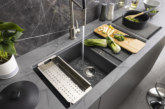Dave Mayer, Sales and Marketing Director of Reginox, discusses how to choose the perfect sink, whatever the style of kitchen.
The sink is invariably low on the agenda for developers, which has always struck me as a little odd, given that it is often installed underneath the window – an area to which the eye is naturally drawn. The emphasis on the kitchen as a major selling feature of a new home cannot be underestimated and, with the sink often providing a key focal point within the kitchen, it provides developers with a good opportunity to specify a high-grade product that will both create the wow factor and add tangible value.
Sink choice has never before been so exciting or extensive and, with the plethora of models and materials on offer, choosing the perfect sink for a development can be something of a minefield. I firmly believe that a beautiful sink can uplift even the simplest of kitchen fits and there is a perfect sink model to suit every kitchen, regardless of shape, style or budget.
The Modern Kitchen
Modern kitchens tend to be cool and contemporary, featuring minimalist design with clean lines and open spaces. High gloss or matt handleless doors, often in a neutral grey or white colour, streamline the room to create a sleek and stylish finish, and appliances such as an integrated oven and induction hob complement the overall aesthetic.
A large, deep angular sink in contemporary coloured stainless steel, which either blends or contrasts with the kitchen cabinets and worksurfaces, works beautifully with this style of kitchen, especially when coupled with a statement tap to create standout.
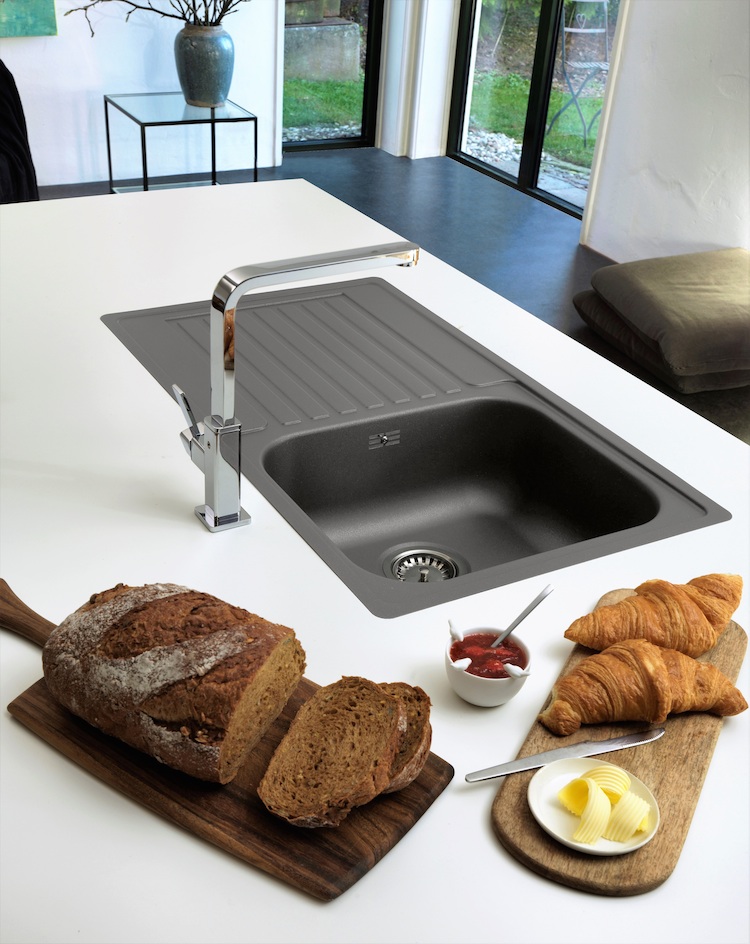
The Classic Kitchen
Classic kitchens – not to be confused with traditional kitchens – offer timeless features and neutral colour palettes that will appeal to a wide variety of tastes and styles. They are elegant, without being ornate, and often feature simple Shaker-style cabinet doors. Flexibility is one of their major benefits as they can easily be made to look more traditional if desired through the inclusion of ornate lighting and wood panels, or more contemporary through modern bar stools and lively colours to create an eclectic look.
A high quality ceramic sink is the perfect partner for the classic kitchen and, with the minimalist, slimline designs that are available today, ceramics can look equally at home in either a true classic kitchen or a modern penthouse apartment. Their ‘old meets new’ combination creates a feeling of low-key elegance that will blend easily with wooden or granite worksurfaces.
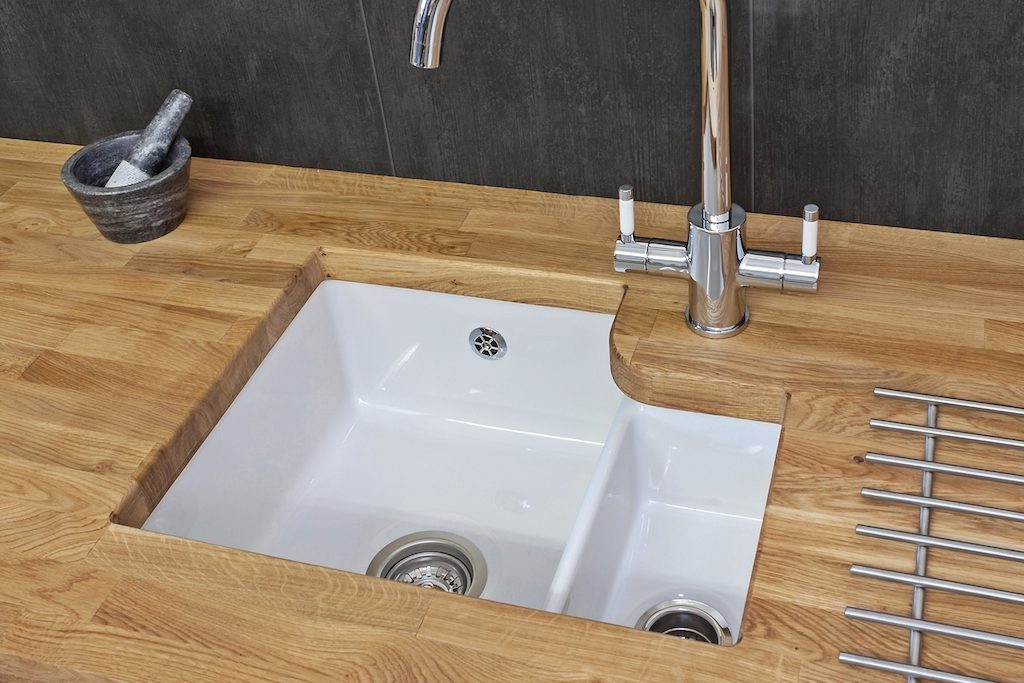
The Industrial Kitchen
Industrial style kitchens seek to recreate the look of a professional kitchen. Dark coloured cabinets, stainless steel appliances, metal worksurfaces and an impressively-sized cooker are all features that can help to give the domestic kitchen an industrial feel. The overall ‘clinical’ look can be softened through the installation of wooden floors and furniture if desired.
A stainless steel sink is the perfect sink for this style of kitchen, particularly when set into a steel worksurface for that full-on industrial aesthetic. Steel has many benefits as, in addition to looking good, it is also hard-wearing and easy to maintain. A tall angular tap or one with a pull-out hose will complete the domestic industrial look.
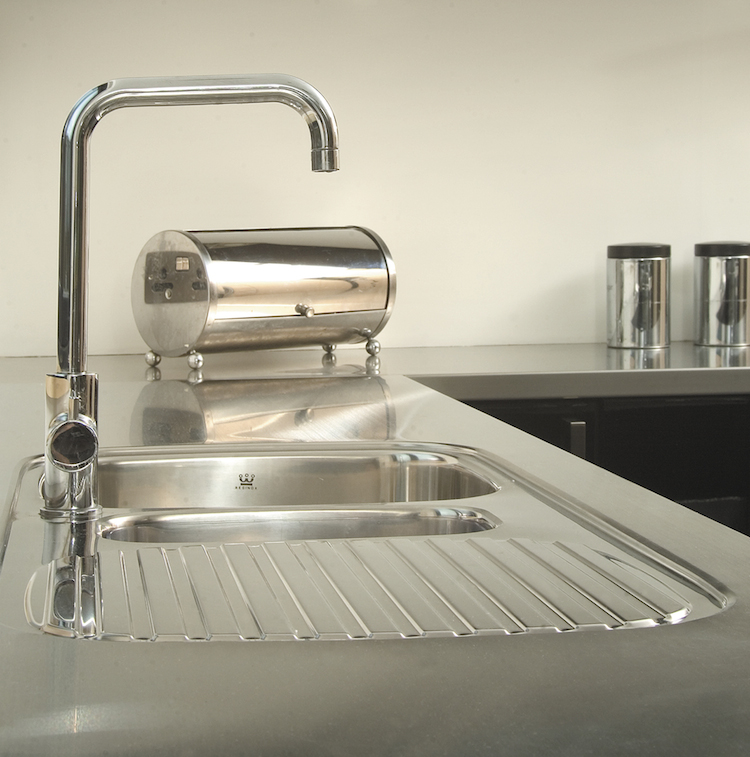
The Compact Kitchen
With so much focus on open-plan, living kitchens and products that lend themselves to large spaces, it can be a challenge to create a more compact kitchen when space is tight. But small can be equally beautiful! Light-coloured, reflective cabinet doors and minimalistic white walls create a feeling of airiness, whilst clever storage solutions, such as wire racks and pull-out corners for slim cupboards can turn even the tiniest room into a tardis.
A stylish, single bowl stainless steel sink with good depth will save on worksurface space, whilst still allowing plenty of room for washing up. Team it with a brightly coloured splashback to add a touch of vibrancy to white walls.
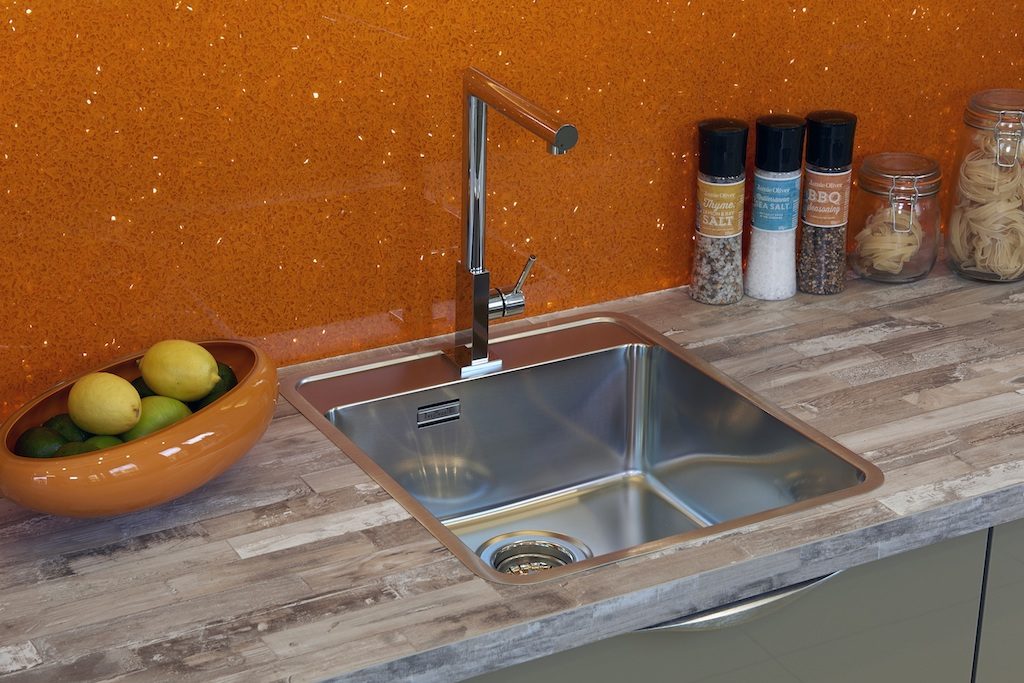
Which sink fitting method?
The sink can be fitted using three methods – undermount, inset or integrated. Some sinks can only be fitted using one of these methods, but many of today’s sinks are designed to be fitted in more than one way, depending on the desired end-look. The choice of sink is partly determined by the worksurface into which is being installed, because it is impossible to integrate every type of sink into any worktop.
Undermount sinks are mounted underneath the worktop, and therefore require a solid surface such as granite, stone or wood. This method increases the usable surface of the worktop and, because the sink unit is fitted below the worktop level, it makes it easier to keep the surface clean.
Inset sinks are installed into the worksurface from above, which means that the edge of the sink unit sits slightly proud of the worktop. The inset method is particularly popular for use with laminate worksurfaces and tends to offer the widest range of sink shapes, sizes and styles.
Integrated sinks are mounted flush with the worktop (so they are sometimes also referred to as flush mounted sinks) and are primarily fitted with HPL multiplex, granite, wood or composite worksurfaces. The worktop and the edge of the sink unit fit together seamlessly, which ensures both a sleek aesthetic and a hygienic, easy to clean surface.


